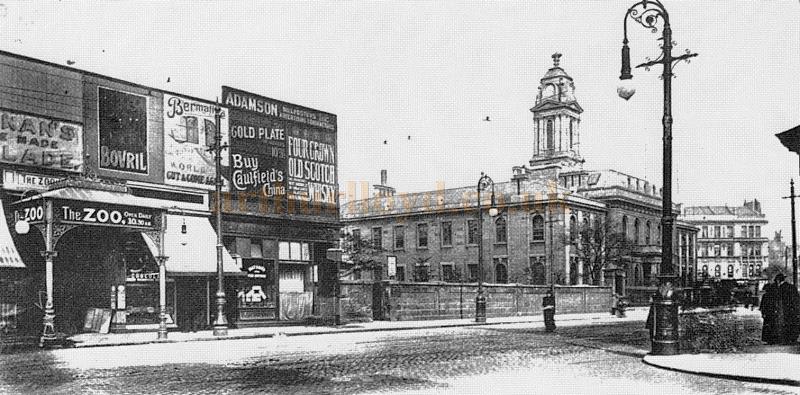
This building has a fascinating history which can be traced back to the late19th century . The iron frames are all that remains of the original building, with the once-ornate interior having being removed and the building entirely re-clad.
Originally the Olympia Theatre, from 1897 it housed a large, fully enclosed entertainment complex, including a circus and the first permanent zoo in Scotland. The complex was owned and managed by E. H. Bostock who had been visiting Glasgow regularly for some years with his travelling menagerie and circus.
A star attraction was Sir Roger the elephant. He was taken by his keeper for walks in the countryside twice a week, along with a smaller companion and dromedaries. Sadly, Roger developed a hormonal condition which can cause male elephants to become aggressive and dangerous. He attacked his keeper, breaking an arm and several ribs. It became difficult even to feed him, and it was impossible to clean his enclosure which soon began to stink. In December 1900 Roger was shot while eating his favourite breakfast of wet bran. The execution made world wide news, with a New Zealand newspaper reporting that a crowd of “considerable dimensions” was present.
A firm of local taxidermists then stuffed Roger and gave him a set of wooden tusks – the originals had been removed for safety as he a menagerie animal,. Their entire shop front had to be removed to get him out! The elephant was displayed for several weeks at the zoo before being transported to the Kelvingrove Museum, where he has remained ever since. The small elephant beside Roger is also from the Zoo.
During the First World War the building was taken over by the military – initially as billeting accommodation for 1000 troops. They slept on palliases that were made by Dallas’s, a well-known Cowcaddens store . The building was then used for the storage of aeroplanes.
Bostock was elected councillor for the Cowcaddens ward, in 1908 but found the problems associated with the area quite depressing. He resigned in 1911 and was appointed a Justice of the Peace in 1917. He vacated the premises in the 1920’s, but from 1921-1931 his menagerie and circus appeared at the Kelvin Hall annual Christmas Carnival.
The building has been used for various purposes over the years, and in the late 1950’s it was a garage for SMT buses. A Chinese complex now occupies the site and in 1990 a team of Chinese carvers were involved in producing the highly ornamental Dragon Gates and Lions .
More information on E. H. Bostock’s connections with the fascinating history of this building can be found on Matthew Lloyd’s website
